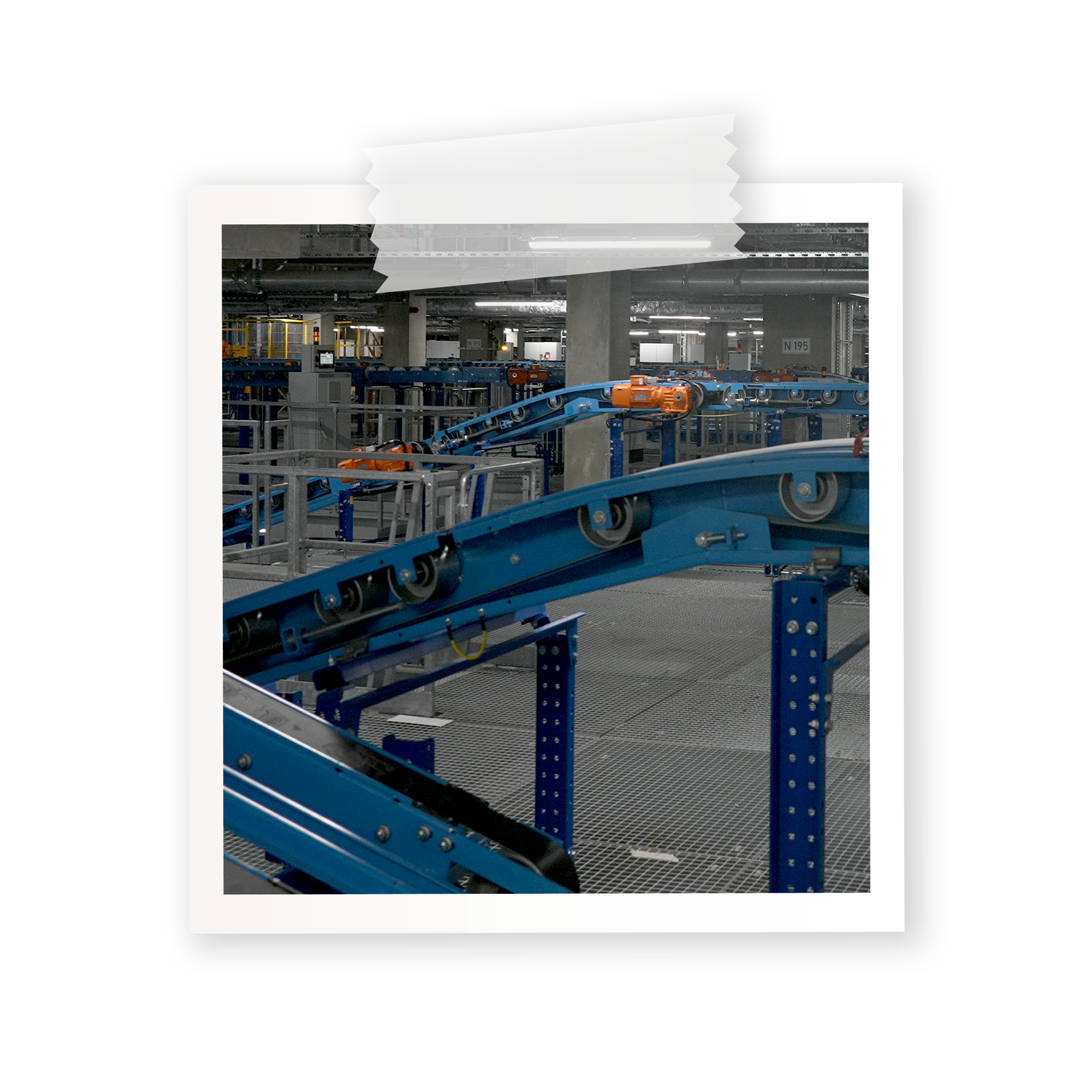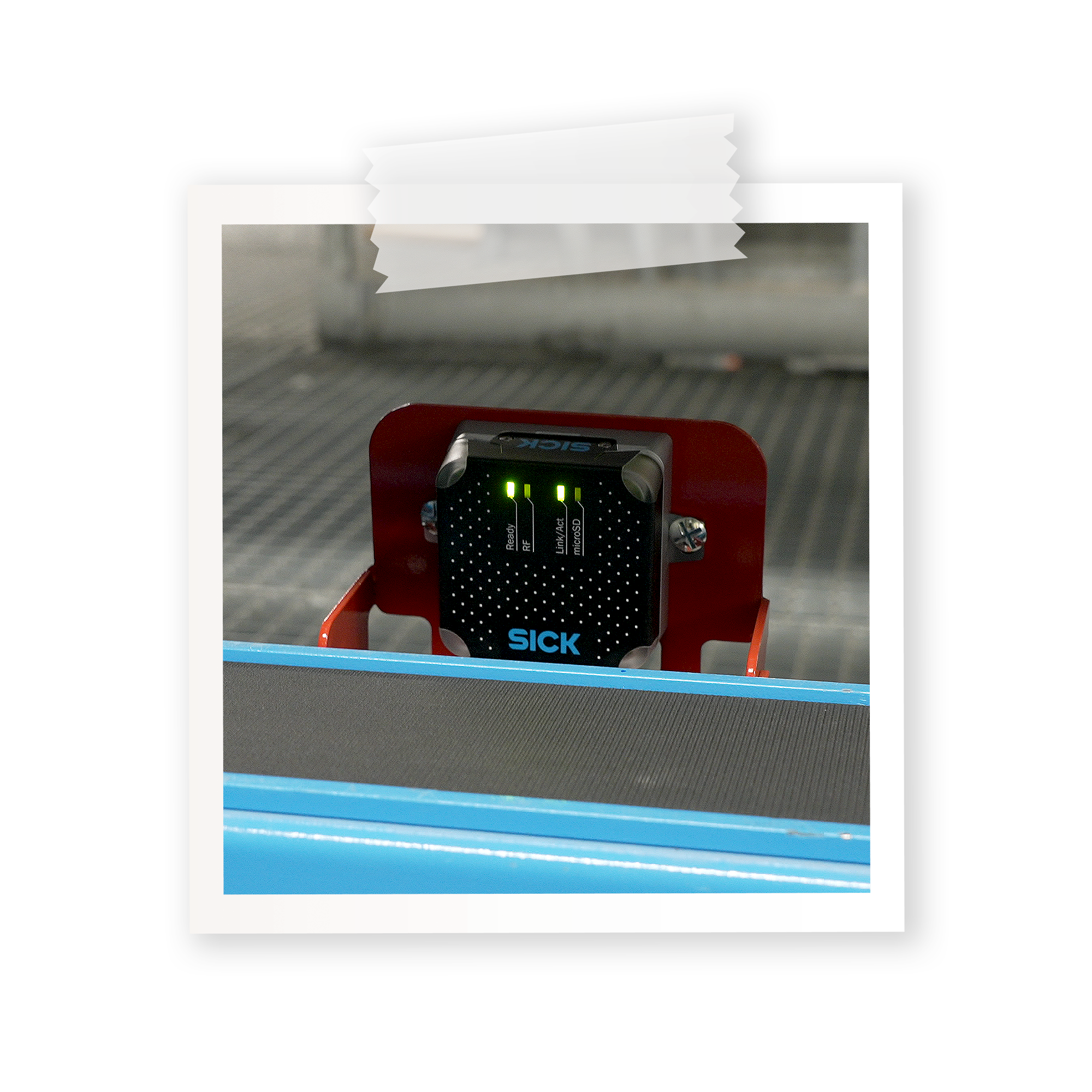Check-in
Passengers typically check their luggage about two hours before their flight leaves. At an airport like Frankfurt’s, at each terminal up to 2,000 luggage items are routed to departing aircraft. So the luggage conveyor system is in constant use. At Terminal 3 they have been technically optimized with a reliable, state-of-the-art control system.
X-raying
When a passenger checks a suitcase, a conveyor belt carries it past a heavy rubber curtain. Then it is x-rayed to make sure that no prohibited items enter the aircraft.
Marrying
After being x-rayed, each item rides a conveyor belt and is placed in a tray. In technical jargon, the item and tray are “married” to one another.
LuRAI
A “luggage recognition artificial intelligence” system – LuRAI for short – continuously monitors whether the item is in the right tray. For this purpose, a photograph is taken of each one. The picture is then evaluated by an artificial intelligence that assigns a unique visual signature to the bag.
LuRAI
At a second checkpoint, each luggage item is photographed again. The AI compares the two photographs to make sure that it is still in the right tray. This prevents luggage items from getting lost.
Chip reader
In order for LuRAI to work, every tray must be unique. This is ensured by a number stored in a special chip attached to its side. The system reads the chip to correctly guide the tray at each entrance and exit point.
Distributor
The baggage conveyor system occupies a total of six levels (above-ground and underground). After being x-rayed and married, a tray and its luggage item travel to a distributor, which routes it either to a waiting loop or, depending on the time, directly to an output for transfer to ground handling personnel.

Waiting loop
If a bag’s flight won’t be leaving for a while, it can cycle in what is called a luggage storage loop.
Proximity sensors
Proximity and photoelectric sensors enable trays to travel on the conveyor belts without the risks of collisions. A sensor is triggered if a metal-bottomed tray approaches it. If a position is still occupied by another tray, the next one in line must wait until it frees up.

Drives
The baggage conveyor system consists of about 80 sections, each of which has around 20 drives. Altogether there are approximately 1,600 motors.
Ejection site
When the flight’s departure time approaches, the luggage item is ejected and carried to the aircraft on a luggage cart. Information on when this happens is also stored in the chip attached to the tray.
Please rotate your device to landscape mode.